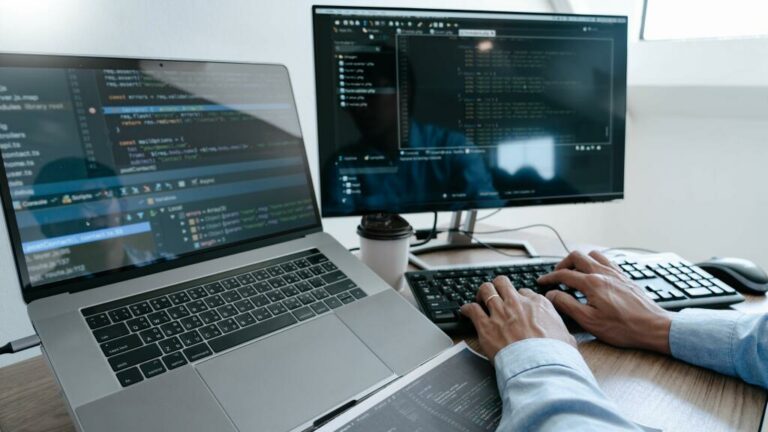Содержание
Concluded that some facial analysis algorithms misclassified Black women nearly 35 percent of the time, while nearly always getting it right for white men. If you would like to learn more, or have questions and wish to speak to a representative, please take a moment to complete our form and we will contact you shortly. Wide variety of environmental capture conditions (e.g. lighting, shadows) make accurate matching more challenging. Pose variations, aging, glasses, facial expressions, and facial hair can also make matching more difficult. Border controls, airlines, airports, transport hubs, stadiums, mega events, concerts, conferences. Biometrics are playing a growing role not only in the real-time policing and securing of increasingly crowded and varied venues worldwide, but also in ensuring a smooth, enjoyable experience for the citizens who visit them.
There are few measures in place to protect everyday Americans from the misuse of face recognition technology. In general, agencies do not require warrants, and many do not even require law enforcement to suspect someone of committing a crime before using face recognition to identify them. Face recognition data is often derived from mugshot images, which are taken upon arrest, before a judge ever has a chance to determine guilt or innocence. Mugshot photos are often never removed from the database, even if the arrestee has never had charges brought against them. According to Governing magazine, as of 2015, at least 39 states used face recogntion software with their Department of Motor Vehicles databases to detect fraud.
Estimates indicate that 25% or more of all state and local law enforcement agencies in the U.S. can run face recognition searches on their own databases or those of another agency. When researching a face recognition system, it is important to look closely at the “false positive” rate and the “false negative” rate, since there is almost always a trade-off. For example, if you are using face recognition to unlock your phone, it is better if the system fails to identify you a few times than it is for the system to misidentify other people as you and lets those people unlock your phone . If the result of a misidentification is that an innocent person goes to jail , then the system should be designed to have as few false positives as possible. Additionally, face recognition has been used to target people engaging in protected speech.
By the end of the training, participants in the first group showed a 6 percent improvement on their abilities in matching unfamiliar faces, whereas those focusing on face shape and the mouth showed no change in their accuracy. The unique arrangement of nodal points is then converted into biometric data usable by facial recognition and facial comparison system. Software that automates capture of facial images analyzes the streaming video frames in real time. Image capture is automatically triggered once focus, facial positioning, lighting, and other image-capture details are verified for compliance with quality standards. Biometrics make use of our most unique physical features and behaviors to serve as digital identifiers that computers and software can interpret and utilize for identity-related applications.
Maine Ld 1945: Biometric Identifiers
The FBI can access over 400-million non-criminal photos from state DMVs and the State Department, and 16 U.S. states allow FACE access to driver’s license and ID photos. Face recognition systems vary in their ability to identify people under challenging conditions such as poor lighting, low quality image resolution, and suboptimal angle of view . But face recognition data can be prone to error, which can implicate people for crimes they haven’t committed. Facial recognition software is particularly bad at recognizing African Americans and other ethnic minorities, women, and young people, often misidentifying or failing to identify them, disparately impacting certain groups. I have a knack for identifying emerging trends, a fondness of learning new things, and a bunch of opinions.
But it also depends on an underlying technology that attempts to evaluate the faces in a photo to match them with those kept in a database of people who opted-in. The changes we’re announcing today involve a company-wide move away from this kind of broad identification, and toward narrower forms of personal authentication. Looking ahead, we still see facial recognition technology as a powerful tool, for example, for people needing to verify their identity, or to prevent fraud and impersonation. We believe facial recognition can help for products like these with privacy, transparency and control in place, so you decide if and how your face is used. The federal government has several face recognition systems, but the database most relevant for law enforcement is FBI’s Next Generation Identification database which contains more than 30-million face recognition records.

The Illinois Biometric Information Privacy Act requires notice and consent before the private use of face recognition tech. Databases are also found at the local level, and these databases can be very large. For example, the Pinellas County Sheriff’s Office in Florida may have one of the largest local face analysis databases. According to research from Georgetown University, the database is searched about 8,000 times a month by more than 240 agencies. A “false negative” is when the face recognition system fails to match a person’s face to an image that is, in fact, contained in a database. In other words, the system will erroneously return zero results in response to a query.
In the near future, face recognition technology technology will likely become more ubiquitous. It may be used to track individuals’ movements out in the world like automated license plate readers track vehicles by plate numbers. Real-time face recognition is already being used in other countries and even at sporting events in the United States. PCMag.com is a leading authority on technology, delivering lab-based, independent reviews of the latest products and services.
Tips For Facial Recognition
FBI allows state and local agencies “lights out” access to this database, which means no human at the federal level checks up on the individual searches. In turn, states allow FBI access to their own criminal face recognition databases. In the past few years, artificial intelligence and machine learning algorithms have become the predominant methods for automatically extracting the above information and then comparing it against other images. These algorithms enhance the biometric security of face recognition technology without having any impact on the user experience. Biometric surveillance systems, particularly face surveillance systems, poses significant threats to privacy. The increasing capabilities of facial recognition algorithms and easy access to photos online by private companies and governments has supercharged the deployment of face surveillance systems.
Facial recognition can be particularly valuable when the technology operates privately on a person’s own devices. This method of on-device facial recognition, requiring no communication of face data with an external server, is most commonly deployed today in the systems used to unlock smartphones. Some argue that human backup identification (a person who verifies the computer’s identification) can counteract false positives. However, research shows that, if people lack specialized training, they make the wrong decisions about whether a candidate photo is a match about half the time. Unfortunately, few systems have specialized personnel review and narrow down potential matches. MorphoTrust, a subsidiary of Idemia (formerly known as OT-Morpho or Safran), is one of the largest vendors of face recognition and other biometric identification technology in the United States.
Sb 117: Police Log Information
Facial recognition allows for covert or even remote identification on a mass scale without consent. EPIC is focused on stopping face surveillance and limiting collection and use of other biometric information. This includes services that help people gain access to a locked account, verify their identity in financial products or unlock a personal device.
And finally, as the long-reputed industry leader, our face recognition solutions are also designed to offer solid protection for the public without encroaching on their privacy, freedoms or human rights. We think this careful, solutions-focused approach is the right one, and we’ve gotten good support from key external stakeholders. We’ve spoken with a diverse array of policymakers, academics, and civil society groups around the world who’ve given us useful perspectives and input on this topic. People will no longer be able to turn on face recognition for suggested tagging or see a suggested tag with their name in photos and videos they may appear in. We’ll still encourage people to tag posts manually, to help you and your friends know who is in a photo or video.
Ending the use of our existing Face Recognition system means the services it enables will be removed over the coming weeks, as will the setting allowing people to opt into the system. We need to weigh the positive use cases for facial recognition against growing societal concerns, especially as regulators have yet to provide clear rules. Unfortunately, calling attention to this issue has also made PimEyes more popular.
- The use of surveillance technologies by local police departments, especially against communities of color and other unjustly targeted groups, poses serious threats to civil liberties.
- Face recognition systems vary in their ability to identify people under challenging conditions such as poor lighting, low quality image resolution, and suboptimal angle of view .
- It has designed systems for state DMVs, federal and state law enforcement agencies, border control and airports , and the state department.
- Law enforcement agencies such as the FBI use facial recognition technology to search criminal watch lists and help conclusively identify a person of interest.
- NEC’s biometric face recognition technology is used worldwide for fighting crime, preventing fraud, securing public safety, and improving customer experience across a vast range of locations and industries.
- Otherwise, AAT will continue to function normally, and we’ll work closely with the blind and visually impaired community on technologies to continually improve AAT.
- Liveness detection algorithms distinguish between a printed, digital, video, and a live facial image.
CNN reports that Cher Scarlett, a software engineer who led the #AppleToo movement before departing the company, is in the latter camp. The report then explains in detail how “PimEyes brought back a real-life nightmare that occurred nearly two decades ago.” A facial recognition tool called PimEyes has recently gone from unknown to infamous. Identifying unfamiliar faces is surprisingly error-prone, even for experienced professionals who perform this task regularly. Previous attempts to train this ability have been largely unsuccessful, leading many to conclude that face identity processing is hard-wired and not amenable to further perceptual learning. More than one-third of the app’s daily active users have opted into its https://globalcloudteam.com/ setting, the social network noted in a blog post.
How Law Enforcement Uses Face Recognition
If the candidate is not in the gallery, it is quite possible the system will still produce one or more potential matches, creating false positive results. These people—who aren’t the candidate—could then become suspects for crimes they didn’t commit. An inaccurate system like this shifts the traditional burden of proof away from the government and forces people to try to prove their innocence. In the absence of federal regulations, cities and states have begun banning facial recognition systems used by police and government.
Mobile App SecurityProtect your mobile apps with strong security and authentication. EPIC’s work is funded by the support of individuals like you, who help us to continue to protect privacy, open government, and democratic values in the information age. We’re going to keep being thoughtful on these issues, ensuring that the technology we develop is helpful to individuals and beneficial to society. And it needs to protect people’s privacy, providing the right level of transparency and control. Face-related technologies can be useful for people and society, and it’s important these technologies are developed thoughtfully and responsibly. If you have opted into our Face Recognition setting, we will delete the template used to identify you.
I’ve been writing about tech, including everything from privacy and security to consumer electronics and startups, since 2011 for a variety of publications. Sign up for SecurityWatch newsletter for our top privacy and security stories delivered right to your inbox. Here, we take a novel expert knowledge elicitation approach to training, based on the feature-based comparison strategy used by high-performing professional facial examiners.

One false match can lead to a wrongful arrest, a lengthy detention, and even deadly police violence. Passive liveness detection looks for indicators of a non-live image such as inconsistent features between foreground and background. It uses various recognition techniques to search for artifacts in an image such as cutouts, masks, skin, texture, borders, and various other characteristics that help it determine a false representation of a user’s face.
This change will also impact Automatic Alt Text , a technology used to create image descriptions for people who are blind or visually impaired. After the change, AAT will still be able to recognize how many people are in a photo, but will no longer attempt to identify who each person is using facial recognition. Otherwise, AAT will continue to function normally, and we’ll work closely with the blind and visually impaired community on technologies to continually improve AAT.
That combination lends itself well to covering security, weird tech, and breaking news; reviewing mice, keyboards, and other hands-on products; and having as much fun as possible in the process. The New York Times reports that it found years-old pictures even if the sample image featured people wearing sunglasses or face masks. Other factors such as different facial hair, new hair styles, or the passage of time didn’t seem to make all that much of a difference either. PimEyes makes it easy to find pictures of people that are strewn across the internet. That isn’t necessarily surprising—reverse image searches have been a thing for years—but it turns out PimEyes is astoundingly good at identifying people with naught but a single photograph.
Facial Recognitions Challenges
All of these would lead to false non-matches during identify verification searches. First, they may try to bypass face biometrics used for authentication or access control by presenting a non-live image of an authorized user during the challenge. We work to ensure that new technologies incorporate considerations of user privacy and where possible enhances it. As just one example, in 2016 we invented Federated Learning, a new way to do machine learning on a device like a smartphone. Sensitive data stays on the device, while the software still adapts and gets more useful for everyone with use.
Facebook Is Shutting Down Its Facial Recognition System, Affecting Over A Billion People
This process is invisible to the user, which makes it harder for fraudsters to bypass it. Fraudsters may attempt to spoof a facial recognition algorithm with non-live digital videos and images obtained online. Liveness detection algorithms distinguish between a printed, digital, video, and a live facial image. The technology also greatly increases the ability to conduct mass surveillance of large crowds. That’s why we’ve been so cautious about deploying face recognition in our products, or as services for others to use. We’ve done the work to provide technical recommendations on privacy, fairness, and more that others in the community can use and build on.
Facial Recognition
Our expert industry analysis and practical solutions help you make better buying decisions and get more from technology. Pesenti said the change also means that automatic descriptions of photos for blind and visually impaired people will no longer include the names of people in the images. Face recognition technology threatens core constitutional rights, such as our right to privacy and to free speech, and endangers people of color and other marginalized groups. In particular, face recognition technology is a flawed, racially-biased tool which turns everybody into a suspect and threatens our civil rights.
Recent Neuroscience Research
The data about a particular face is often called a face template and is distinct from a photograph because it’s designed to only include certain details that can be used to distinguish one face from another. Facial examiners achieve high levels of accuracy by conducting slow, careful analysis of similarities and differences in individual facial features. They learn this strategy during on-the-job training over several months or even years. But the majority of people who use face identification in their roles complete much shorter training courses that range from only one hour to five days, with Dr. Towler and colleagues’ own research showing these courses aren’t very effective. Once the faceprint is established, this biometric data can be compared against other sources of data, such as existing faceprints in a public or private database, or the image on a government-issued ID document.
It has designed systems for state DMVs, federal and state law enforcement agencies, border control and airports , and the state department. Other common vendors include 3M, Cognitec, DataWorks Plus, Dynamic Imaging Systems, FaceFirst, and NEC Global. Face recognition systems use computer algorithms to pick out specific, distinctive details about a person’s face. These details, such as distance between the eyes or shape of the chin, are then converted into a mathematical representation and compared to data on other faces collected in a face recognition database.
